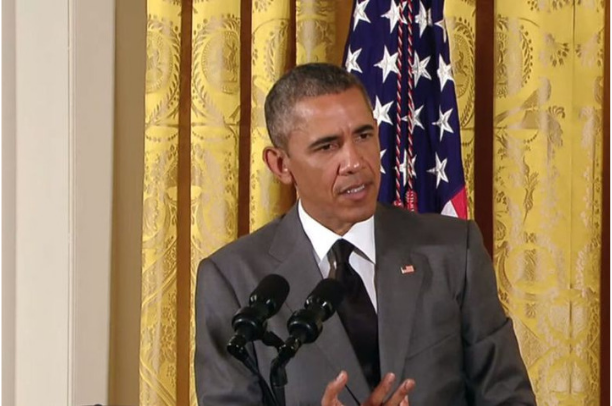Building Authority and Thought Leadership Through Your Podcast

In today’s crowded digital landscape, establishing yourself as an authority in your field can feel like an uphill battle. But what if there was a powerful tool that could not only showcase your expertise but also amplify your voice and influence? That is where podcasting comes in. With its rapidly growing audience and intimate, engaging format, a podcast is the perfect platform to position yourself as a thought leader.
Want to learn more about storytelling? Start by downloading the first chapter of The Storytelling Mastery.
In this article, we will explore how you can leverage your podcast to build credibility, foster trust with your audience, and carve out a unique space for your expertise in a sea of content. Get ready to discover the untapped potential of podcasting in your journey to becoming a recognized authority.
Now, let’s get started on building a brand that commands respect and attracts an even larger, engaged audience.
Define Your Unique Thought Leadership Niche
Before you can become a thought leader, you need to clearly define your area of expertise and what sets you apart. Your listeners need to know why they should come to you for insights and solutions.
Identify Your Zone of Genius:
What are you particularly good at within your industry? What unique perspectives or experiences do you bring to the table that others might not? This is where you’ll find your “zone of genius”—the sweet spot where your passion and expertise intersect.
Consider asking yourself the following questions: What topics am I most passionate about? What knowledge do I have that others frequently seek advice on? What do I want to be known for in the long term?
Focus on a Niche Audience:
Thought leaders cater to specific audiences. Rather than trying to appeal to everyone, focus on building a loyal following by delivering content tailored to a particular group. This will help you stand out and create a deeper connection with your listeners.
For example: If you are a creative entrepreneur, focus on delivering content that speaks directly to eco-conscious designers, fashion brands, and consumers.
See also How the African Diaspora is Pioneering Transpersonal Diplomatic Leadership
As your Actionable tip, write down your zone of genius and who your ideal podcast audience is. Start brainstorming content ideas that align with both. That moves us to step 2 creating and delivering High-Value, Original Content. You surely want to pay attention to that.
Deliver High-Value, Original Content
To be seen as an authority, you must consistently deliver original, high-value content that offers new insights, challenges conventional thinking or solves problems for your audience. Thought leaders are known for providing fresh ideas that others can’t find elsewhere.
Share Insights and Predictions:
Thought leaders are forward-thinking. Use your podcast to share industry insights, future trends, or predictions. Give your audience something to think about or act on, positioning yourself as a resource they turn to foresight. Here are some example ideas for your consideration:
- Top Trends in Creative Entrepreneurship for 2025
How the Future of Podcasting Will Impact Your Business
- Interview with Other Experts in Your Field
Bring guests who are also recognized in your niche but offer a slightly different perspective. These interviews add variety to your content while demonstrating that you are connected to influential people in your industry. The key is to guide these interviews so that your audience gains maximum value.
See also Alfredo Sambù: A Journey of Entrepreneurship and Community Leadership in Italy
This is the approach of the Obehi Podcast, an interview-based show that features experts from different topics and different parts of the world. This helps us to better service the audience with a fresh perspective all the time.
What can you do? Well, instead of just hosting traditional interviews, ask challenging questions or cover topics that your guest has never publicly discussed. This keeps the conversation fresh and engaging.
Share Personal Stories and Lessons Learned: Your audience will connect with your authenticity. Share your personal journey, including both successes and failures, to create relatable content. When your listeners see you as a real person with valuable experience, they’ll trust your insights even more.
If you don’t know where to start from, consider brainstorming three future-focused episode ideas that share your unique insights or predictions for your industry. Incorporate a mix of interviews and personal storytelling to spice up the process.
Create a Consistent Brand Voice and Presence
To build authority and thought leadership, you need to establish a consistent voice, style, and message that resonates with your audience. The more cohesive your podcast brand, the more recognizable and authoritative it becomes.
In case you are wondering, your brand voice is the unique personality your business projects to connect with your audience across various platforms.
In podcasting, this will mean developing a consistent tone, style, and messaging that not only builds brand recognition but also fosters a deeper connection with your listeners.
Whether you are sharing stories, interviewing guests, or discussing industry insights, your brand voice should be distinct and memorable, thereby making your podcast a go-to source for your audience. To create a consistent brand voice and presence, pay attention to the following:
Develop a Signature Style and Tone:
Your podcast’s tone and style should be distinct and aligned with your personal brand. Whether you are more conversational, formal, or humorous, your audience should be able to immediately recognize your voice.
See also Five Lessons from Ursula Burns: A Blueprint for Modern Business Leadership
Remember that consistency can help build familiarity and trust. What are some examples? Well, look at it this way:
- Formal and Professional: Deliver content that is polished and research-backed, suitable for business owners and professionals.
- Conversational and Casual: A friendly, laid-back style that feels more like a chat over coffee, perfect for creative and entrepreneurial audiences.
What about you? Which of these two examples sounds like family to what you have in podcast style?
Establish Visual and Audio Branding:
Your podcast’s branding isn’t just about the content; it’s also about the entire experience. Ensure your podcast artwork, intro music, and promotional materials all reflect a cohesive brand.
- Podcast artwork: Make sure your cover art is visually appealing and reflects your brand.
- Intro and outro music: Select music that aligns with the tone of your podcast and creates a memorable experience for your listeners.
Build Authority Across Platforms:
Extend your podcast authority by consistently sharing valuable content across other platforms—whether it’s your blog, social media, or YouTube channel. The more people see you delivering valuable insights in various formats, the more they will see you as a thought leader.
- Social media: Share snippets or quotes from your podcast episodes.
- Speaking engagements: Use your podcast to position yourself as a speaker or panelist at industry events.
- Here are your actionable tips: Define your signature podcast style and tone. Review your podcast’s artwork, intro music, and episode structure to ensure everything is cohesive with your brand.
Engage with Your Community and Build Relationships
Leadership is not just about sharing content; it’s about building relationships and community. The deeper your connections with your audience, the more likely they are to trust you as an authority.
Foster Two-Way Conversations:
Engage with your listeners by creating opportunities for dialogue. You want your podcast to be a space where listeners feel heard, not just talked at.
- Listener Q&A: Dedicate an episode or segment to answering listener questions.
- Social Media Polls and Surveys: Use polls or surveys to get feedback from your audience on episode topics or new ideas.
- Create a Community Space: Consider creating a community around your podcast, such as a private Facebook group, a LinkedIn group, or a Slack channel. This space allows your audience to connect with you and with each other, further solidifying your position as a leader.
Attend and Speak at Industry Events: Get involved in industry events—both online and offline. Attending and speaking at events will help raise your profile and introduce you to a new audience.
See also From Competing to Leading: How Purposeful Storytelling Fuels Market Leadership
Whenever you speak at an event or conference, make sure to promote your podcast as a valuable resource for your audience.
Make sure to create an engagement strategy for your podcast, whether it’s hosting listener Q&As, creating a community group, or attending events where you can connect with your audience. Here are some actionable tips you can take right away:
- Niche Down Your Thought Leadership Focus: Choose one area of expertise that you can speak about consistently and with authority. The more focused your niche, the easier it will be to establish yourself as an expert.
- Share Fresh, High-Value Content Regularly:
- Stay on top of trends and future predictions in your niche. Your audience will return if they know they’ll receive valuable and timely insights that they can’t get anywhere else.
- Engage Your Audience Consistently: Be active across multiple platforms, not just your podcast. Interact with your audience on social media, through email newsletters, and in any community spaces you create.
Conclusion: Becoming a Thought Leader Takes Time and Consistency
Congratulations! You have now learned how to use your podcast to build authority and thought leadership in your niche. Remember, this process takes time, but with consistent, high-quality content and engagement, you will establish yourself as a go-to expert.
Next Steps: Keep delivering valuable insights and focus on connecting with your audience. Building a reputation as a thought leader requires dedication, but the rewards—trust, influence, and business growth—are well worth it.
Want to learn more about storytelling? Start by downloading the first chapter of The Storytelling Mastery.






